


Golden autumns when the yellow ginkgo leaves cover the roofs and streets of the city are familiar sights for someone like me, who grew up in Suzhou, China. In fact, 18 giant ginkgo trees were planted along the pavement at my primary school’s campus. During my six autumns there, spaces that were thickly covered with ginkgo leaves become playgrounds for us kids between classes.
We would pile them up, kick them around, grab a handful of the golden leaves and throw them at each other. Not very hygienic, I admit. But for us, it was a substitute for snowball fights in our southeastern city, where it only snows every two or three years.
The 18 ginkgo trees were not only a feature of the scenery, but also my primary school’s spiritual symbol. There was even an award called “The Ginkgo Pupil” given to students who performed well in both study and conduct. This was my earliest impression of the high esteem that Suzhou people hold for ginkgo trees.


Golden Ginkgo:
Symbol of My Home


Words and photos by Yi Qian
Words: 1,277 | Reading Time: 6 Minutes | Listening Time: 9 Minutes
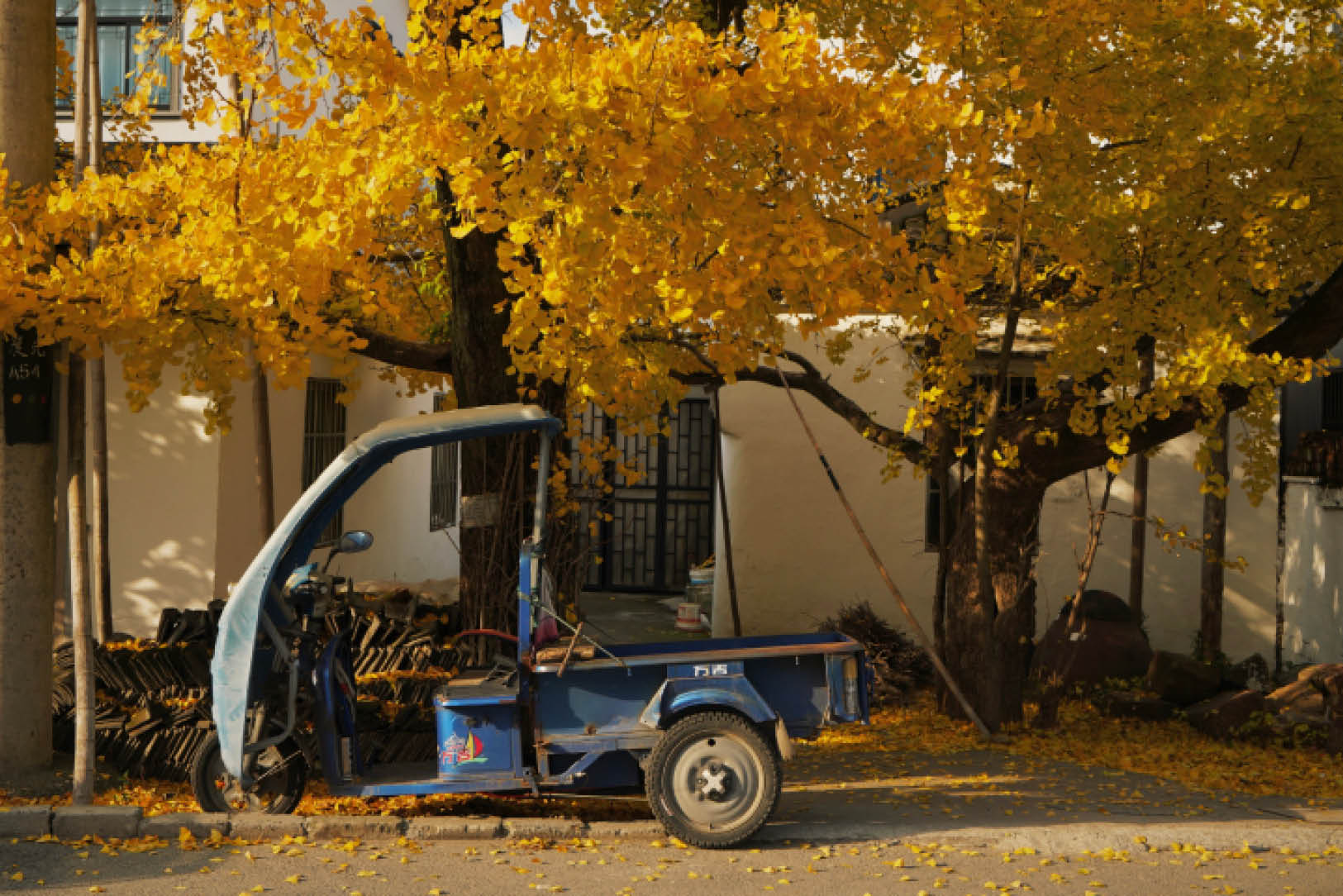
Golden autumns when the yellow ginkgo leaves cover the roofs and streets of the city are familiar sights for someone like me, who grew up in Suzhou, China. In fact, 18 giant ginkgo trees were planted along the pavement at my primary school’s campus. During my six autumns there, spaces that were thickly covered with ginkgo leaves become playgrounds for us kids between classes.
We would pile them up, kick them around, grab a handful of the golden leaves and throw them at each other. Not very hygienic, I admit. But for us, it was a substitute for snowball fights in our southeastern city, where it only snows every two or three years.
The 18 ginkgo trees were not only a feature of the scenery, but also my primary school’s spiritual symbol. There was even an award called “The Ginkgo Pupil” given to students who performed well in both study and conduct. This was my earliest impression of the high esteem that Suzhou people hold for ginkgo trees.


Golden Ginkgo:
Symbol of
My Home


Words and photos by Yi Qian
Words: 1,277 |
Reading Time: 6 Minutes |
Listening Time: 9 Minutes




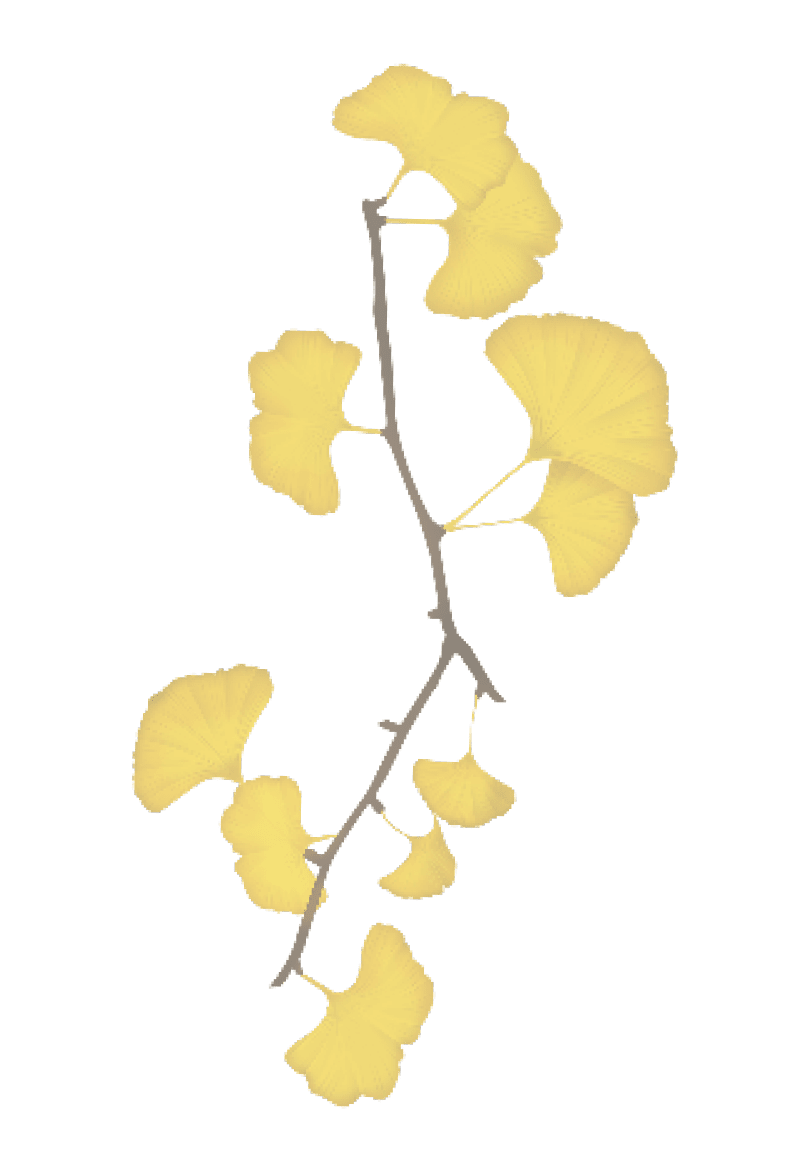

Ginkgo first appeared on Earth over 200 million years ago, a time when dinosaurs walked the earth. Most species of the ginkgo genus eventually went extinct except for Ginkgo biloba. Trees of this species are the ginkgo trees that we see today.
People have cultivated ginkgo trees in China for at least 1,000 years, and possibly as long as 4,000 years. The city of Suzhou abounds with tourist attractions that include old ginkgo trees which were planted hundreds or even thousands of years ago.
The oldest ginkgo tree in Suzhou is believed to have been planted around 2,000 years ago in Dongshan, a village that is part of the greater city. Lore has it that the tree was once struck by lightning and reduced to a quarter of its original trunk. However, the tree sprouted new branches and still thrives today.
Other attractions with old ginkgo trees in Suzhou include the Lingering Garden, the Garden of Pleasure, Dinghui Temple, Yonghui Temple, and Soochow University. Each autumn, when the ginkgo trees pave the ground with golden leaves, they attract large number of residents and tourists.
Ginkgo trees in Suzhou are planted not only in temples and classical gardens, but also along the streets as part of the everyday landscape. Every year from mid-November to late December, the government allows fallen ginkgo leaves to remain unswept on the sidewalks of several street sections. These sidewalks become scenic spots popular for viewing, playing in the leaves, and photography.
DINOSAUR WITNESS
GINKGO IN
CHINESE CULTURE
The species is considered a symbol of longevity and vitality because of its potential to grow over centuries to impressive heights and widths. It is also known to have an above-average capability to survive catastrophic events.
Ginkgo has long had cultural significance for Chinese people. Its traditional Chinese name is Gongsun Tree. Gongsun is the family name of the Yellow Emperor, one of the earliest and most legendary sovereigns in ancient China. Other Chinese names for ginkgo include Yinxing 银杏 (silver almond tree), Baiguoshu 白果树 (white nut tree), Yazhangshu 鸭掌树 (duck feet tree), and Fozhijia 佛指甲 (Buddha’s fingernail tree).
Ginkgo trees can often be seen in the courtyards of many Daoist temples and is often related with the Chinese philosophy Daoism, especially its concept of yin-yang. The shape of the ginkgo leaf is split at the outer rim but merged at the petiole, the stalk that attaches the leaf to the stem. Therefore, the leaf can be seen to symbolise the unity of opposites like yin and yang, life and death.
Besides being a cultural symbol, ginkgo trees have been a part of Suzhou people’s daily lives from ancient to modern times. Not only do they create a beautiful and relaxing environment, but also their seeds are edible after processing. Called baiguo 白果 (white nut) in Mandarin, they are used in sautés, soups, porridges, and even desserts. However, you don’t want to gobble too many of them within a short period of time. Actually, they are slightly toxic, especially when raw. (According to the Hong Kong Centre for Food Safety, healthy adults should limit intake to a few cooked seeds per day. Children, the elderly, those who are pregnant and people with poor health conditions may want to avoid eating them altogether.)
Baiguo is part of traditional Chinese medicine, where it is often considered beneficial for the lungs. Its medicinal use was first recorded in the book Riyong Bencao (Materia Medica of Everyday Food Items) published by Rui Wu in 1367, which states that ginkgo seeds were often stewed together with other food to help with health problems. Today, Chinese medicine practitioners still prescribe baiguo as a key ingredient of herbal formulas to treat asthma and bronchitis.



Ginkgo first appeared on Earth over 200 million years ago, a time when dinosaurs walked the earth. Most species of the ginkgo genus eventually went extinct except for Ginkgo biloba. Trees of this species are the ginkgo trees that we see today.
People have cultivated ginkgo trees in China for at least 1,000 years, and possibly as long as 4,000 years. The city of Suzhou abounds with tourist attractions that include old ginkgo trees which were planted hundreds or even thousands of years ago.
The oldest ginkgo tree in Suzhou is believed to have been planted around 2,000 years ago in Dongshan, a village that is part of the greater city. Lore has it that the tree was once struck by lightning and reduced to a quarter of its original trunk. However, the tree sprouted new branches and still thrives today.
Other attractions with old ginkgo trees in Suzhou include the Lingering Garden, the Garden of Pleasure, Dinghui Temple, Yonghui Temple, and Soochow University. Each autumn, when the ginkgo trees pave the ground with golden leaves, they attract large number of residents and tourists.
Ginkgo trees in Suzhou are planted not only in temples and classical gardens, but also along the streets as part of the everyday landscape. Every year from mid-November to late December, the government allows fallen ginkgo leaves to remain unswept on the sidewalks of several street sections. These sidewalks become scenic spots popular for viewing, playing in the leaves, and photography.
DINOSAUR
WITNESS
GINKGO IN
CHINESE CULTURE
The species is considered a symbol of longevity and vitality because of its potential to grow over centuries to impressive heights and widths. It is also known to have an above-average capability to survive catastrophic events.
Ginkgo has long had cultural significance for Chinese people. Its traditional Chinese name is Gongsun Tree. Gongsun is the family name of the Yellow Emperor, one of the earliest and most legendary sovereigns in ancient China. Other Chinese names for ginkgo include Yinxing 银杏 (silver almond tree), Baiguoshu 白果树 (white nut tree), Yazhangshu 鸭掌树 (duck feet tree), and Fozhijia 佛指甲 (Buddha’s fingernail tree).
Ginkgo trees can often be seen in the courtyards of many Daoist temples and is often related with the Chinese philosophy Daoism, especially its concept of yin-yang. The shape of the ginkgo leaf is split at the outer rim but merged at the petiole, the stalk that attaches the leaf to the stem. Therefore, the leaf can be seen to symbolise the unity of opposites like yin and yang, life and death.
Besides being a cultural symbol, ginkgo trees have been a part of Suzhou people’s daily lives from ancient to modern times. Not only do they create a beautiful and relaxing environment, but also their seeds are edible after processing. Called baiguo 白果 (white nut) in Mandarin, they are used in sautés, soups, porridges, and even desserts. However, you don’t want to gobble too many of them within a short period of time. Actually, they are slightly toxic, especially when raw. (According to the Hong Kong Centre for Food Safety, healthy adults should limit intake to a few cooked seeds per day. Children, the elderly, those who are pregnant and people with poor health conditions may want to avoid eating them altogether.)
Baiguo is part of traditional Chinese medicine, where it is often considered beneficial for the lungs. Its medicinal use was first recorded in the book Riyong Bencao (Materia Medica of Everyday Food Items) published by Rui Wu in 1367, which states that ginkgo seeds were often stewed together with other food to help with health problems. Today, Chinese medicine practitioners still prescribe baiguo as a key ingredient of herbal formulas to treat asthma and bronchitis.






GINKGO ROOTS

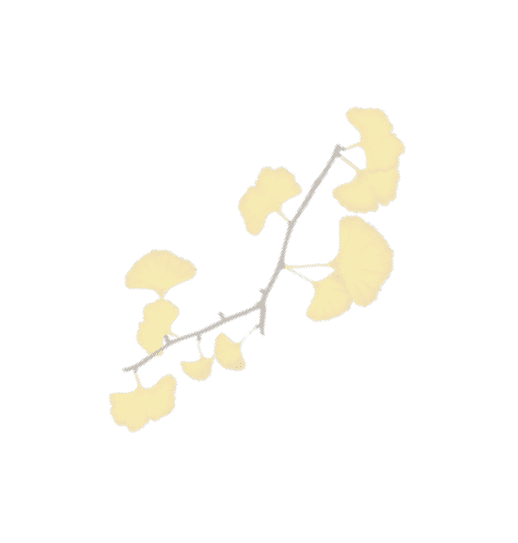



Kimvi Nguyen, Lecturer at XJTLU's Department of Architecture, in a meditation inspired by ginkgo
THE POWER OF GINKGO
Last November, as part of my work in the University Marketing and Communications office at Xi’an Jiaotong-Liverpool University, I attended a ginkgo festival organised by the local community at Dinghui Temple in Suzhou. My task was to record XJTLU Design School’s participation in the festival by writing an article and taking photographs.
That afternoon, as the sun shone on the golden ginkgo leaves, I watched Kimvi Nguyen, Lecturer at XJTLU’s Department of Architecture, launch a meditation inspired by ginkgo in the Dinghui Temple courtyard.
I was impressed to see her lying for almost an hour in a traditional Chinese bamboo drying basket filled with ginkgo leaves. She held up a ginkgo leaf in each hand, representing the twin ginkgo trees in the yard.
I invited her for an interview after she finished the meditation. As we sat on a staircase in the courtyard, Kimvi told me that the twin ginkgo trees in the yard, one 345 years old and the other 205, are living fossils.
Kimvi said: “My inspiration came from the Dinghui Temple and also the importance of the ginkgo trees to this place. Ginkgo is a resilient species that can survive wars and diseases. It symbolises endurance and health.
“I would like to pay homage to the power of this species in my own way as a performance artist, and also as a foreigner, pay tribute to China’s culture, environment and people. This was where my strength came from during the performance.”
A NEW APPRECIATION
Even being Chinese and growing up in Suzhou, I have to admit that, as a kid, I didn’t really understand the beauty of ginkgo. In fact, when I was in primary school, the distance between my home and Dinghui Temple was only 600 metres. I must have walked past the gate hundreds of times. It wasn’t until three years ago that I set foot on the temple grounds to enjoy the ginkgo scenery.
Photography has been one of my passions for nearly 10 years. When I finished my master's study in the UK and returned to Suzhou in 2019, I began to roam around the city, exploring and photographing aspects of Suzhou I hadn’t before realised existed.
The ginkgo tree scene is one of those aspects. Now I go “ginkgo hunting” each autumn, trying to photograph as many ginkgo scenic spots as I can. I’m never bored. Sometimes it’s still and the leaves will stain the whole space yellow. On another day, the wind will rise and ginkgo leaves flutter in the air like butterflies.
In fact, the more I discover about ginkgo trees and Suzhou in general, the more I realise how much I love where I was born and grew up. No matter how many cities I travel to across the globe, Suzhou will always be my harbour and the ginkgo trees a symbol of home.



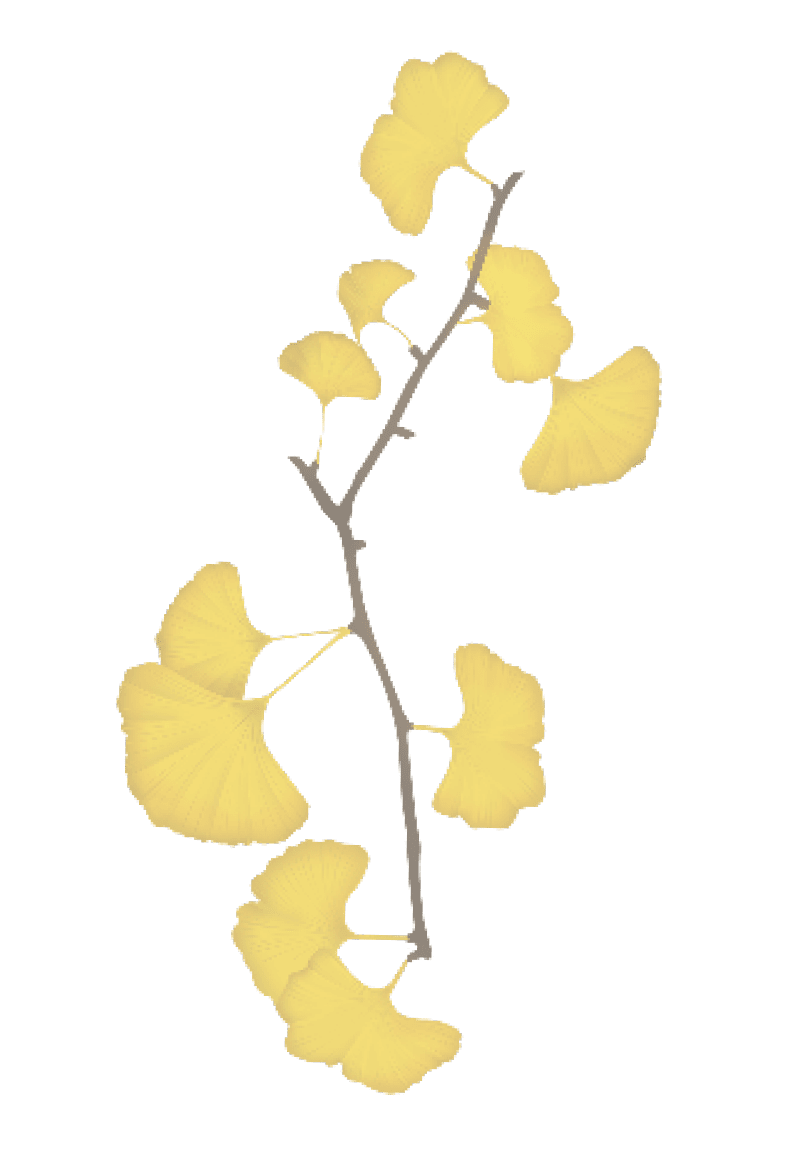

Last November, as part of my work in the University Marketing and Communications office at Xi’an Jiaotong-Liverpool University, I attended a ginkgo festival organised by the local community at Dinghui Temple in Suzhou. My task was to record XJTLU Design School’s participation in the festival by writing an article and taking photographs.
That afternoon, as the sun shone on the golden ginkgo leaves, I watched Kimvi Nguyen, Lecturer at XJTLU’s Department of Architecture, launch a meditation inspired by ginkgo in the Dinghui Temple courtyard.
I was impressed to see her lying for almost an hour in a traditional Chinese bamboo drying basket filled with ginkgo leaves. She held up a ginkgo leaf in each hand, representing the twin ginkgo trees in the yard.
I invited her for an interview after she finished the meditation. As we sat on a staircase in the courtyard, Kimvi told me that the twin ginkgo trees in the yard, one 345 years old and the other 205, are living fossils.
Kimvi said: “My inspiration came from the Dinghui Temple and also the importance of the ginkgo trees to this place. Ginkgo is a resilient species that can survive wars and diseases. It symbolises endurance and health.
“I would like to pay homage to the power of this species in my own way as a performance artist, and also as a foreigner, pay tribute to China’s culture, environment and people. This was where my strength came from during the performance.”
THE POWER
OF GINKGO
A NEW
APPRECIATION
Even being Chinese and growing up in Suzhou, I have to admit that, as a kid, I didn’t really understand the beauty of ginkgo. In fact, when I was in primary school, the distance between my home and Dinghui Temple was only 600 metres. I must have walked past the gate hundreds of times. It wasn’t until three years ago that I set foot on the temple grounds to enjoy the ginkgo scenery.
Photography has been one of my passions for nearly 10 years. When I finished my master's study in the UK and returned to Suzhou in 2019, I began to roam around the city, exploring and photographing aspects of Suzhou I hadn’t before realised existed.
The ginkgo tree scene is one of those aspects. Now I go “ginkgo hunting” each autumn, trying to photograph as many ginkgo scenic spots as I can. I’m never bored. Sometimes it’s still and the leaves will stain the whole space yellow. On another day, the wind will rise and ginkgo leaves flutter in the air like butterflies.
In fact, the more I discover about ginkgo trees and Suzhou in general, the more I realise how much I love where I was born and grew up. No matter how many cities I travel to across the globe, Suzhou will always be my harbour and the ginkgo trees a symbol of home.
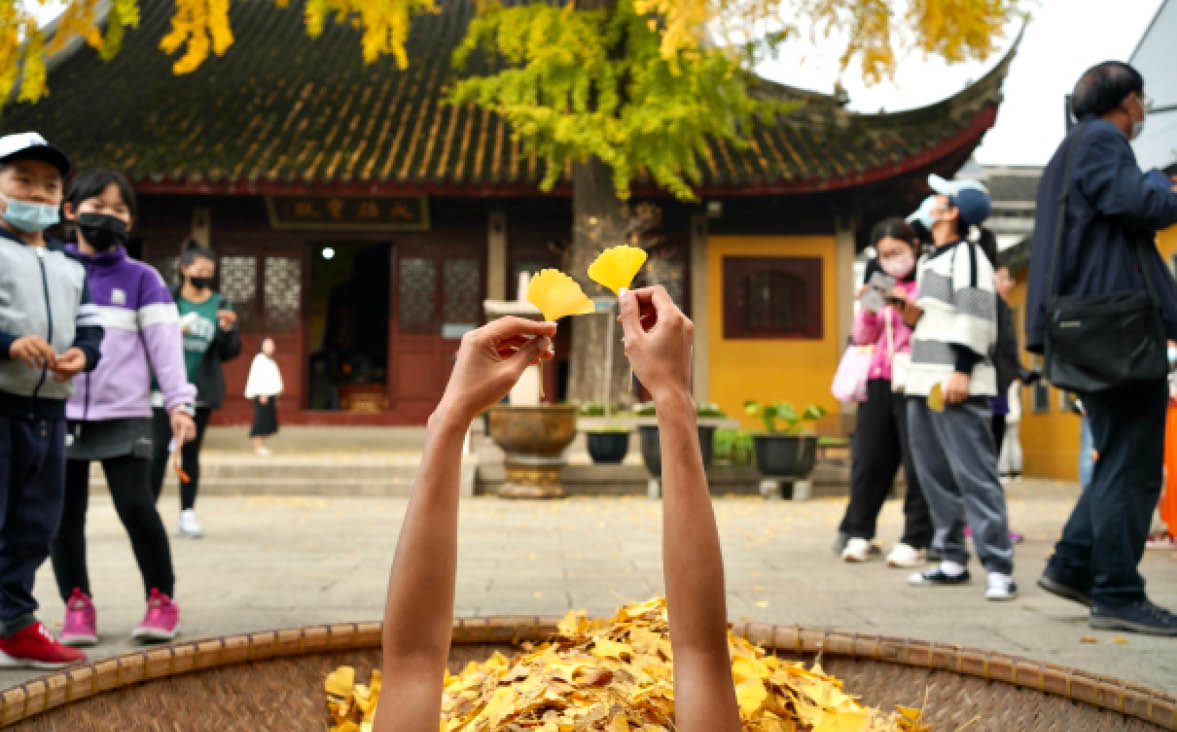
Kimvi Nguyen, Lecturer at XJTLU's Department of Architecture, in a meditation inspired by ginkgo






Kimvi Nguyen, Lecturer at XJTLU's Department of Architecture, in a meditation inspired by ginkgo


GINKGO ROOTS
















Golden Ginkgo:
Symbol of My Home
GINKGO ROOTS

